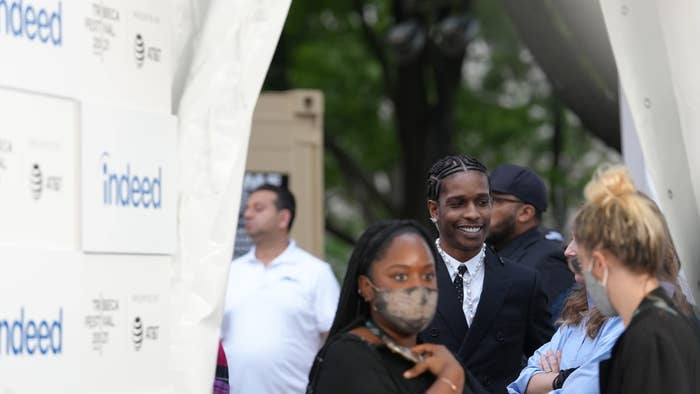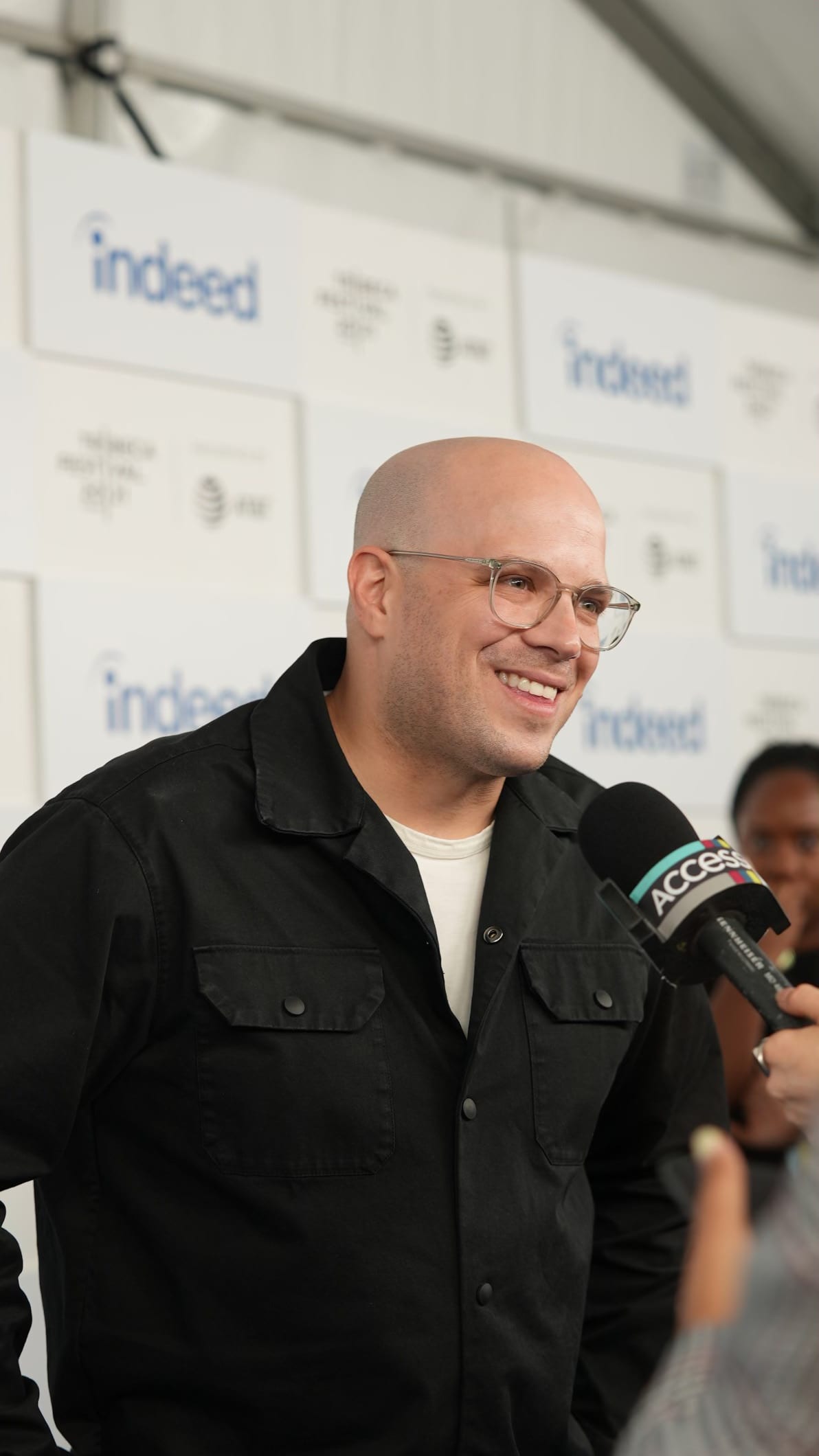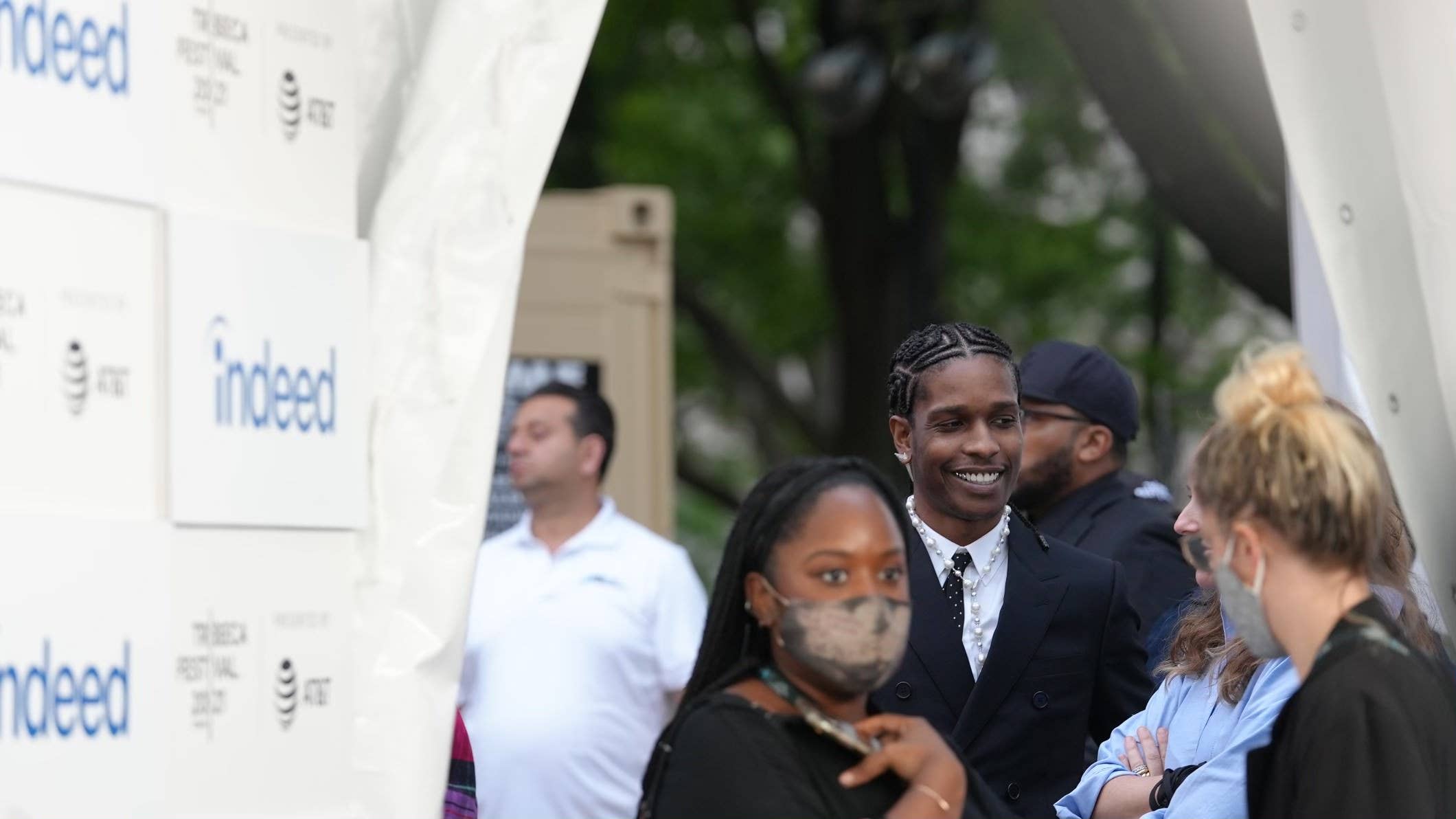
ASAP Rocky lives like the world is watching. He’s fashion show runway-ready, consistent with the lineage of Harlem go-getters. Before most people heard him, they saw him take viewers around Harlem on 2011’s “Peso” music video. So, it’s no surprise he was already filming when 19-year-old Mustafa Jafari approached his team on the streets of Sweden on June 30, or why he made sure to tell the camera that he and his team are not trying to fight or go to jail, or why the video of his brawl being publicized by TMZ helped get him sent to Swedish prison, or why when he finally was able to get a phone call with the outside world after days imprisoned he had one wish outside of getting himself released.
“I just wanted them to document it. So, they finally let me make a phone call and the first thing I said to my management was, ‘Yo, call up and make sure we get a camera crew,’” Rocky told Complex at the 2021 Tribeca Film Festival.
Six days after Rocky was arrested, filmmaking collective The Architects were working on a documentary about Rocky’s ordeal going through the Swedish legal system before it evolved into something much deeper. With his mother, ASAP Mob crew, and dozens of eager Tribeca festivalgoers in the audience, Rocky world premiered the documentary Stockholm Syndrome, a 105-minute vehicle for Rocky to navigate us through his life story with an unfiltered candor seldom heard from an artist who rarely brings listeners deeper into him than the fabric covering the man.
The doc engrossingly uses the hardships Rocky experienced in Sweden as conduits for self-discovery. Rocky rarely delves into his late father in his music but admits in the documentary, “I think solitary confinement got me to reflect a lot,” before sardonically speaking on the survivor’s guilt he has of his father’s passing. [His father passed away in December 2012, a month before Rocky released his debut album Long. Live. ASAP in January 2013.] Rocky openly wonders in the documentary if his father sacrificed his life in order for Rocky to live the one he does now. It’s a level of self-exploration you can infer from the doc was intentionally kept away from the outside world looking in prior to being imprisoned in Stockholm.
While Rocky is endearingly transparent, there are moments where you can see him deny tears access to his eyes or remarks he doesn’t want to sound depressing by harping too much on his personal problems even though the entire documentary is predicated on those very problems. Rocky has always been cognizant of the eyes on him and image he wants them to see, and the same is true with Stockholm Syndrome. It’s just this time he expressly wants to use his story to shed light on injustices with prison systems around the world. But, even his transparency was imbued with his unique brand of flyness.

The abstract visuals Rocky is known for were integral to the doc’s storytelling, appearing in the form of animation, which Rocky said was his idea from the start of the documentary’s creation. The animation served as a way to show reenactments of the stories of his time in solitary confinement. The exaggerated nature of animation allowed Rocky drive his nightmarish reality of spending 23 hours in a cell. Rocky complaining about how every day seemed to be on a loop felt visceral seeing his animation walk along walls in the small cell only to end up right where he started to do the same motion all over again.
While we never see footage of Rocky actually in prison, there were touching moments in the documentary that show Rocky’s difficulty with reconciling the larger-than-life fame he has with the dehumanizing reality he was in. In one scene, he’s speaking with the filmmakers on speakerphone from prison weeks into his detainment with an uncharacteristically gravely voice weighed down by his melancholic yearnings just be able to touch grass again. For a few seconds, silence hangs in the air waiting for Rocky to invite us deeper into his emotional state. But, Rocky blurts out how one of his hardships is that his chapstick taste like Secret deodorant, filling the room with laughter that led to Rocky listening to Tyler, the Creator’s July 2019 Funkmaster Flex freestyle where he rapped “free Rakim.”
Rocky was well aware the cameras were rolling and he was effectively talking to his fans on that call, so the laugh he lets out when Tyler spews that he and Flex are looking “for buff net niggas just for some hot butt sex” sounded as cathartic as it was reassuring to those watching that the Rocky fans love wasn’t gone. The Architects do a great job of giving viewers access to these moments in a way that provides humanizing context to a story that’s been in the news for years. We not only see the first moments of Rocky’s freedom from Stockholm prison, but we also see that Kim Kardashian-West, who advocated for Rocky’s release, being one of the first phone calls he received minutes after being released. We get to hear the raspy sincerity in his voice as he pleaded his case to the judge from the first audio recordings of Rocky’s trial ever released.
But, getting that access wasn’t entirely easy. “With the Swedish government, they were very open. They let us record the audio of the trial during the days of the trial. But, in other areas they were very specific about what you can and can’t film. You’re not even allowed to film the exterior of government buildings in Sweden,” Stockholm Syndrome producer Matthew Perniciaro told Complex.

We see the typical rapper tropes in the documentary that carries an extra level of gravitas given how they are part of Rocky’s renewed freedom. We see him back in the studio with Pharrell in Miami, on stage with Tyler, the Creator at Camp Flog Gnaw, his return performance in Sweden, and Rolling Loud New York City. Those act as epilogues, but I kept finding myself drawn to how being watched went from confidence building to almost imprisoning for Rocky. After being released from prison, he hid out at a beachfront property instead of heading back to his home New York City after having his freedom stripped away. He made a point to say he did so to hide away from the paparazzi, and interestingly, “Black Twitter.”
Rocky addressed the criticism waged against him for his 2015 comments about Black Lives Matter being a bandwagon that only cares about Black lives when it’s taken away by police. He admits to speaking from a place of ignorance and apologizes. He also pledges to be more active in social justice matters by donating and shedding light on issues, yet he never specifies which issues or any future plans.

Watching Rocky watch Stockholm Syndrome, you can notice his emotions are not far removed from what happens in the doc. He belts out laughter when the documentary shows footage of Wendy Williams describing what Rocky slept on in prison as “not even a cot” in her usual cartoonishly dramatic volume. He embarrassingly shields his face with his hands when his mother and sister make his childhood pictures center of attention. During the post-screening Q&A, Rocky was happy about the documentary but not satisfied, calling the Tribeca Film Festival entry just the beginning, promising a different edit when the documentary is widely released.
Rocky was released from prison in Stockholm, but Stockholm Syndrome was one of the most salient looks into the life of a rapper who may have never truly shown us Rakim Athelaston Mayers because of the eyes that created ASAP Rocky.


